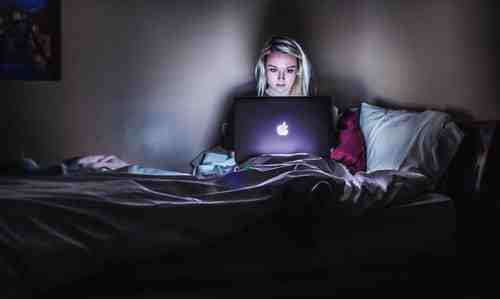How to Reduce Eyestrain

Every day we spend hours and hours in front of our screens. When we are not working, we are watching TV series and movies, answering emails, playing video games, or watching our social networks, resulting in severe eye fatigue. Eye Strain can cause blurred vision, tiredness and migraines, making it difficult to focus, and if left uncorrected, damage eyesight. In this article, we will explain the risks of spending too much time in front of screens and give you some tips on how to protect yourself and reduce eyestrain.
What Are The Risks of Too Much Screen Time
The blue light emanating from your computer screen, mobile phone, or tablet is intended to allow you to see precisely what is happening on it. The problem is that, at the same time, this light leads to several issues.
Firstly, the light "tricks" your brain into thinking that it's daytime even when it's nighttime. For this reason, many people who look at the screen until the very moment they get into bed and close their eyes, have serious difficulties in falling asleep.
On the other hand, although we watch more and more videos, we generally use the screen to read a text, whether it's articles, emails, or messages on social networks. This means that we spend a lot of time staring at the screen and even forgetting to blink. The effects can be dry eyes, blepharitis (inflammation of the eyelid), and eye fatigue, but it can also accentuate vision problems we had before, such as astigmatism or myopia.
Likewise, spending too much time concentrating our gaze and attention on our gadgets can cause us headaches, neck, and shoulder pain, as it has undoubtedly happened to you more than once.
Tips to Protect Your Eyesight
To begin with, you should know that although there are glasses on the market that supposedly counteract the blue light emanating from the screen, there is no conclusive scientific evidence to prove their effectiveness. However, there is a number of expert recommendations that you can follow to protect your eyes as much as possible.
Customize your screen. Whenever you can, modify the brightness and contrast of your screen: the lower the light and the lower the contrast, the less damage it will cause to your eyes (but don't lower it so much that you can't see what's on it, because then you'll be forcing your eyes anyway).
Whenever you can, turn on the dark mode in applications that allow it when it's dark, or you don't have natural light in your environment.
Increase the distance you are from the device: the more, the better. If you wear glasses, use them when you're in front of your computer, tablet, or laptop, instead of moving closer to the screen to see what's on it.
Rest your eyes. Experts recommend applying the so-called «20-20-20» rule: look away from your screen and another distance (20 feet or six meters) for 20 seconds every 20 minutes. This simple exercise will give your eyes some rest.
Remember to blink to moisturize your eyes. It may sound absurd, but you might even want to set the alarm every few seconds to get used to it (you can do without it, obviously). Also, don't hesitate to use artificial tears if you feel that your eyes are dry all the time.
Avoid using the screen as much as you can, at least the hour before you go to bed: your eyes and brain will thank you, and you'll sleep better and more soundly.
Finally, while opinion on its usefulness is not unanimous, you may want to consider using screen filters to filter out blue and green rays coming from your device. You can try software like F.lux or RedShift to modulate the color temperature of your screen depending on the time of the day. This will reduce the glare effect without impacting on the readability of the screen.